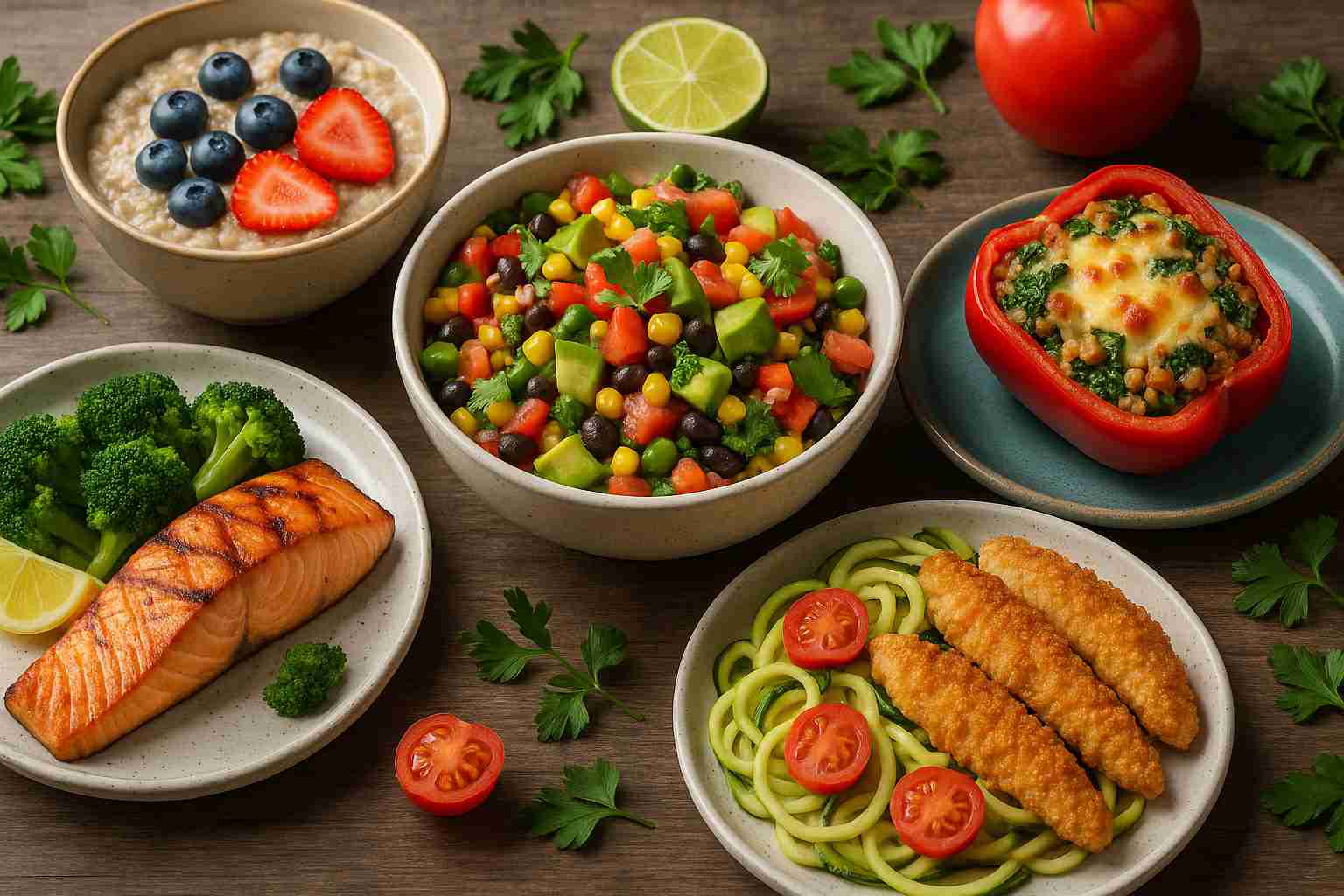Managing blood sugar doesn’t have to mean bland or boring meals. With a bit of creativity and smart ingredient swaps, it’s possible to enjoy delicious dishes that support healthy blood sugar levels. From savoury mains to sweet treats, these diabetic-friendly recipes prove that nutritious eating can also satisfy your cravings and make every meal feel special.
1. Zucchini Noodles with Pesto and Cherry Tomatoes
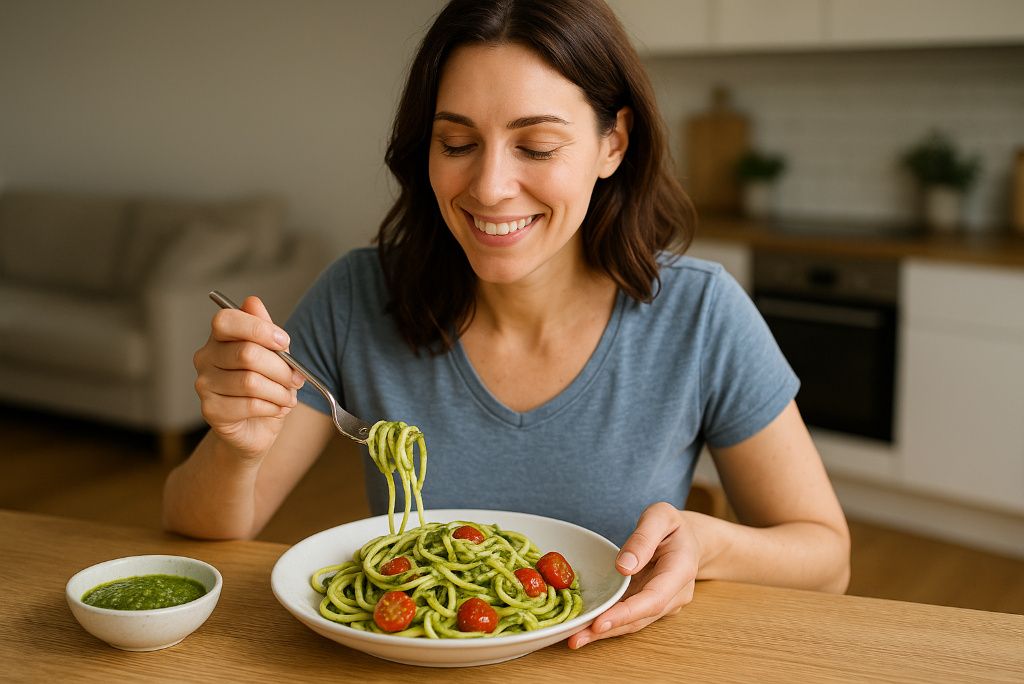
Zucchini noodles, or “zoodles”, are an excellent low-carb alternative to traditional pasta. They’re rich in fibre and water, making them filling without spiking blood sugar levels. Toss them with a homemade pesto made from basil, garlic, nuts, and olive oil for heart-healthy fats that help slow carbohydrate absorption. Add fresh cherry tomatoes for a burst of colour and natural sweetness.
Compared to white pasta, which can have over 40 grams of carbs per serving, zucchini noodles keep carbs under 10 grams while providing vitamins A and C. Try experimenting with different nut bases for your pesto, like almonds instead of pine nuts, for new flavours. Learn more about low-carb pasta alternatives at American Diabetes Association.
2. Greek Yogurt Parfait with Berries and Nuts
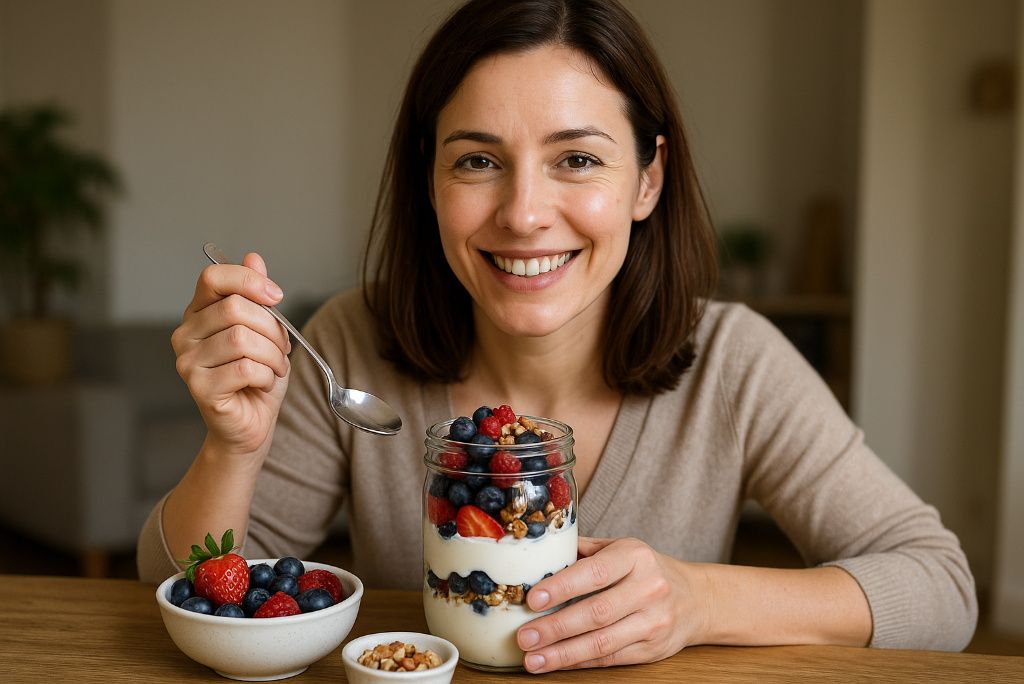
Swap sugary breakfast cereals or high-sugar yoghurt cups for a vibrant parfait layered with unsweetened Greek yoghurt, fresh berries, and chopped nuts. Greek yoghurt is higher in protein and lower in carbs than regular yoghurt, helping keep blood glucose steady. Berries like blueberries, raspberries, and strawberries are lower in sugar compared to fruits like bananas or mangoes and add natural sweetness and antioxidants.
Topping your parfait with nuts, such as almonds or walnuts, provides healthy fats and crunch while helping manage blood sugar levels. This versatile recipe works for breakfast, a snack, or even dessert. For more on the benefits of Greek yoghurt for diabetes, visit Harvard T.H. Chan School of Public Health.
3. Baked Salmon with Citrus Herb Marinade

Fatty fish like salmon are highly recommended for those managing diabetes, thanks to their omega-3 fatty acids, which promote heart health and reduce inflammation. Baking salmon with a marinade of fresh herbs, lemon, and orange juice brings a zesty brightness without adding significant carbs. Unlike breaded or fried preparations, baking keeps the dish lighter and healthier.
Pair salmon with roasted non-starchy veggies such as asparagus or broccoli for a well-balanced meal. In comparison, breaded fish dishes can contain hidden carbs and unhealthy fats. Find more reasons to include salmon in your diet at Cleveland Clinic.
4. Cauliflower Rice Stir-Fry
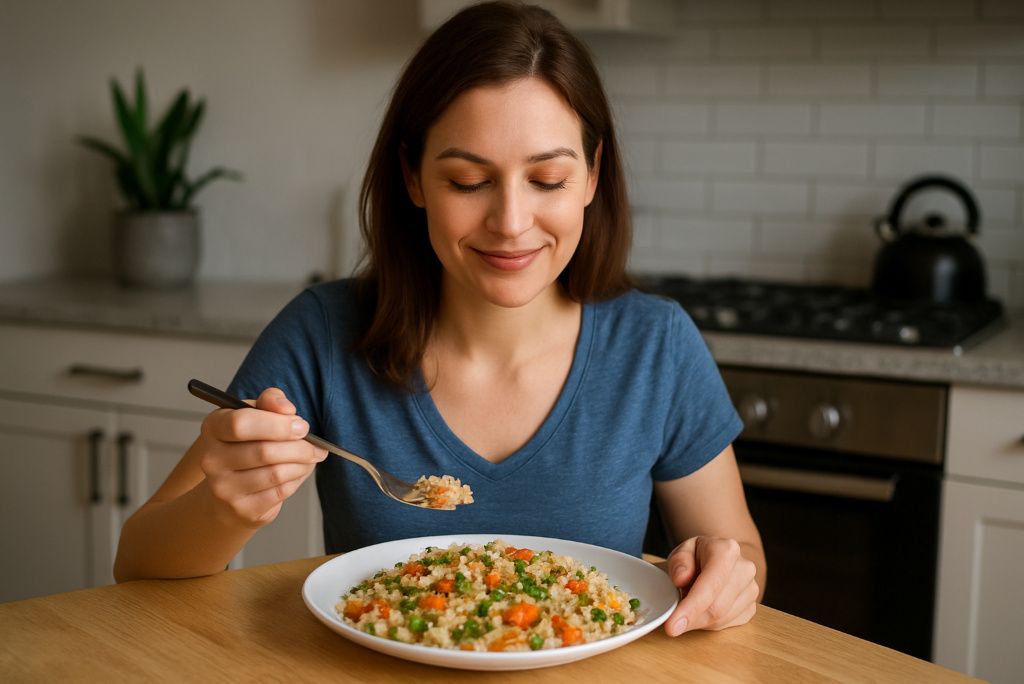
Rice is a staple in many cuisines but can quickly spike blood sugar. Cauliflower rice offers a low-carb alternative with a similar texture and volume. Just place raw cauliflower florets in a food processor and blend until they take on a rice-like texture. Sauté with garlic, ginger, bell peppers, snap peas, and a splash of low-sodium soy sauce for an Asian-inspired stir-fry.
Each serving of cauliflower rice contains about 5 grams of carbs versus 45 grams in a cup of white rice. It’s also packed with fibre and vitamin C, supporting digestion and immunity. Discover more about cauliflower rice at Mayo Clinic.
5. Turkey and Veggie Lettuce Wraps
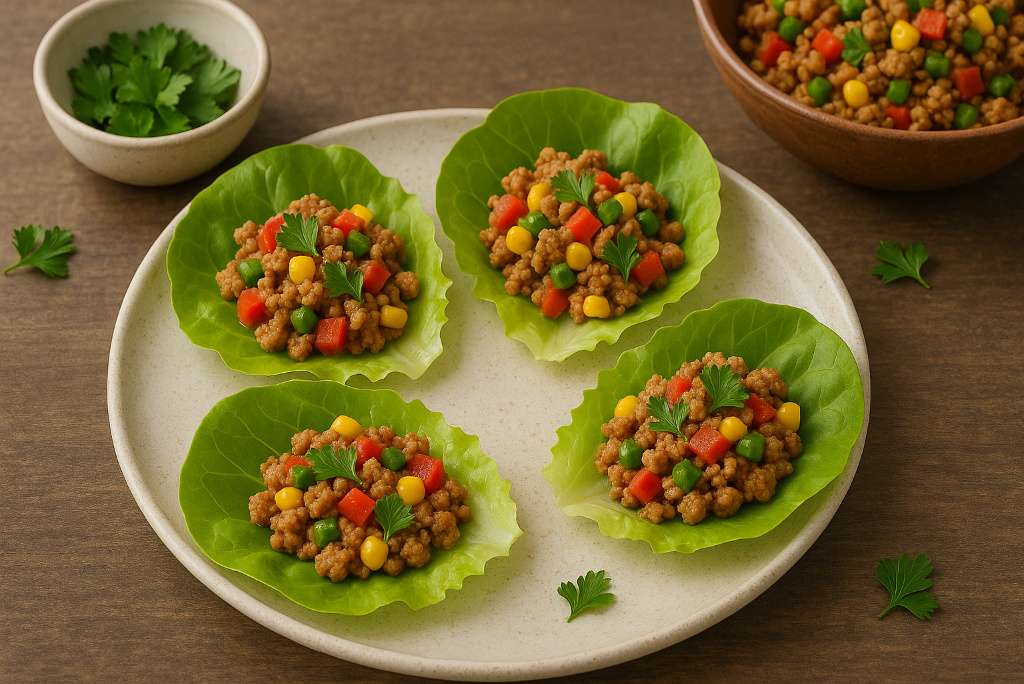
Instead of tortillas or sandwich bread, use crisp lettuce leaves as a wrap for lean turkey breast, shredded carrots, bell peppers, and avocado slices. Lettuce wraps keep carbs extremely low and add refreshing crunch. Lean turkey provides protein to keep you fuller longer without excess saturated fat. These wraps are versatile, allowing you to switch up the fillings with chicken, tofu, or shrimp. Compared to a typical flour tortilla, which contains roughly 20 grams of carbs, lettuce adds virtually none. For more on healthy sandwich alternatives, check out Johns Hopkins Medicine.
6. Spaghetti Squash Primavera

Spaghetti squash is a fantastic pasta replacement for individuals watching carbohydrate intake. When roasted, it shreds into tender, noodle-like strands with a sweet, nutty flavour. Toss it with sautéed bell peppers, zucchini, onions, and cherry tomatoes for a vibrant primavera dish. Spaghetti squash contains only about 10 grams of carbs per cup, compared to the 40+ grams in regular spaghetti.
It’s also rich in fibre, helping stabilise blood sugar levels. Compared to traditional pasta, spaghetti squash lowers the glycaemic impact of meals while still providing a satisfying texture. For tips on cooking spaghetti squash, visit Healthline.
7. Chia Seed Pudding with Almond Milk
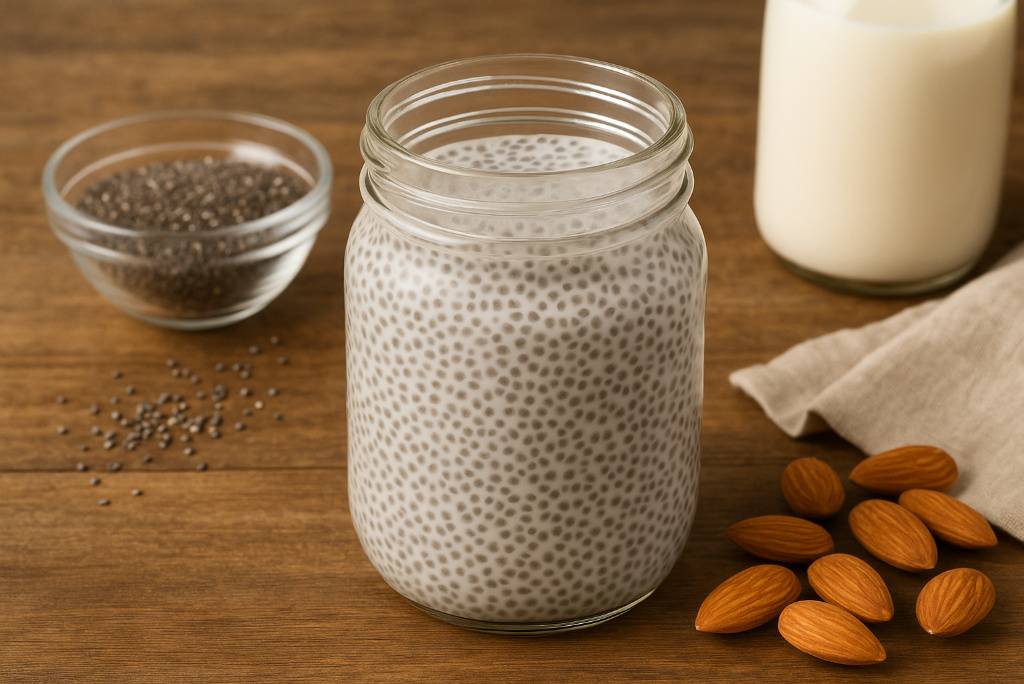
Chia seeds are a superstar in diabetic-friendly diets. They’re high in fibre and omega-3 fatty acids, which help regulate blood sugar. When soaked in unsweetened almond milk, chia seeds absorb liquid and create a creamy pudding-like texture. Sweeten lightly with vanilla extract or a touch of stevia and top with fresh fruit. One serving of chia pudding contains roughly 10 grams of carbs and significant fibre, making it a low-glycaemic dessert option. Unlike traditional puddings loaded with sugar, chia pudding is a nutritious and filling alternative. Learn more about chia seeds at Harvard Health.
8. Veggie Omelet with Spinach and Mushrooms

Eggs are a versatile protein source that doesn’t raise blood sugar levels. A veggie-packed omelette filled with spinach, mushrooms, and tomatoes offers fibre, vitamins, and minerals. Cooking the omelette with olive oil rather than butter helps reduce saturated fat intake. Compared to restaurant omelettes loaded with cheese and processed meats, a homemade version can be tailored for lower fat and sodium. Serve it with sliced avocado for extra healthy fats. Omelettes are perfect for breakfast, lunch, or dinner. Explore more egg-based meal ideas at American Egg Board.
9. Grilled Chicken with Mango Salsa
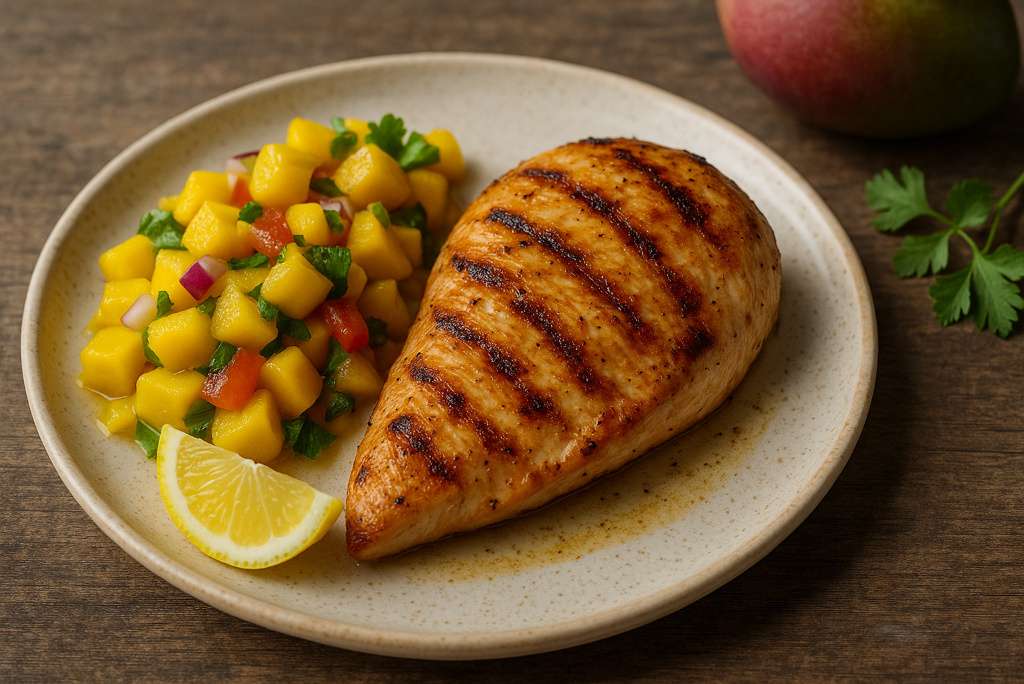
Grilled skinless chicken breast is a lean protein ideal for blood sugar management. Pair it with a vibrant mango salsa made with diced mango, red onion, cilantro, lime juice, and jalapeño for a sweet-and-spicy kick. Despite mango being a higher-sugar fruit, a small portion of salsa spread over protein adds flavour without overwhelming carb counts. Compared to heavy cream sauces, fruit salsas bring freshness and nutrients with fewer calories and carbs. For safe fruit choices with diabetes, see Centers for Disease Control and Prevention.
10. Baked Apple with Cinnamon and Walnuts
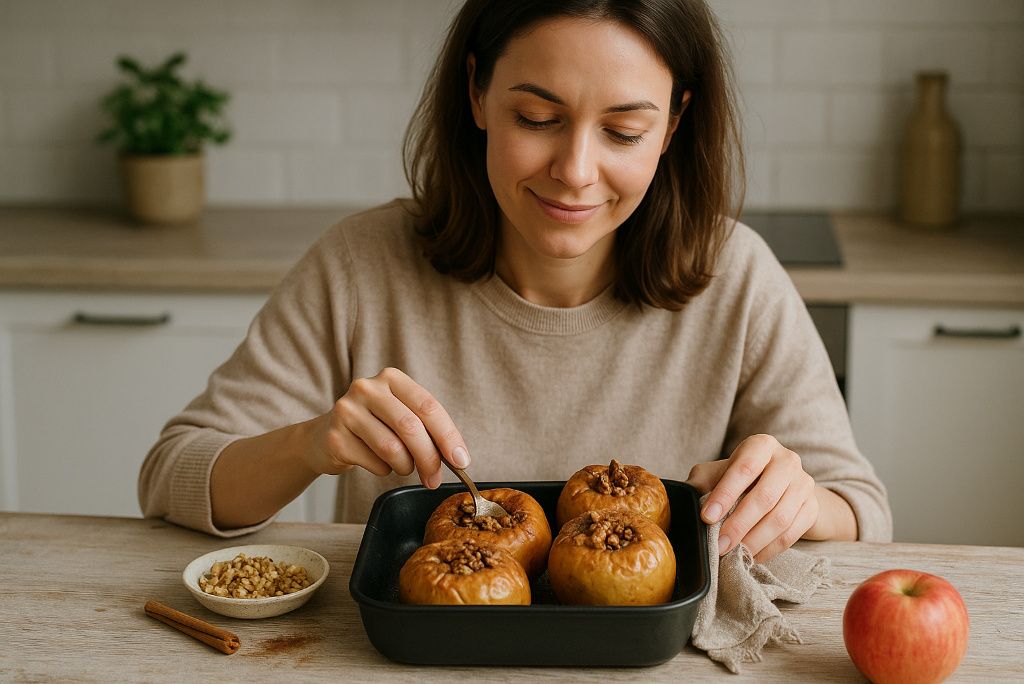
Craving dessert? A baked apple sprinkled with cinnamon and chopped walnuts satisfies a sweet tooth without excessive sugar. Apples have natural fibre that helps moderate blood sugar spikes. Baking softens the fruit and intensifies its sweetness, eliminating the need for added sugar. Compared to apple pie, which can contain over 20 grams of sugar per slice, a baked apple dessert can stay under 15 grams. Add a dollop of unsweetened Greek yoghurt for creaminess. Learn more about the health benefits of apples at National Institutes of Health.
11. Beef and Broccoli Stir-Fry

This takeout classic can be made healthier at home by choosing lean beef cuts and using less sodium. Broccoli is a non-starchy vegetable full of fibre, vitamins, and antioxidants. Stir-frying in a small amount of olive oil keeps fats in check, and replacing traditional sauces with low-sodium soy sauce and garlic reduces sugar and salt. One cup of homemade beef and broccoli has far fewer carbs than its restaurant counterpart, which often includes sweetened sauces and cornflour. Find more healthy stir-fry recipes at Diabetes UK.
12. Cottage Cheese with Cinnamon and Berries
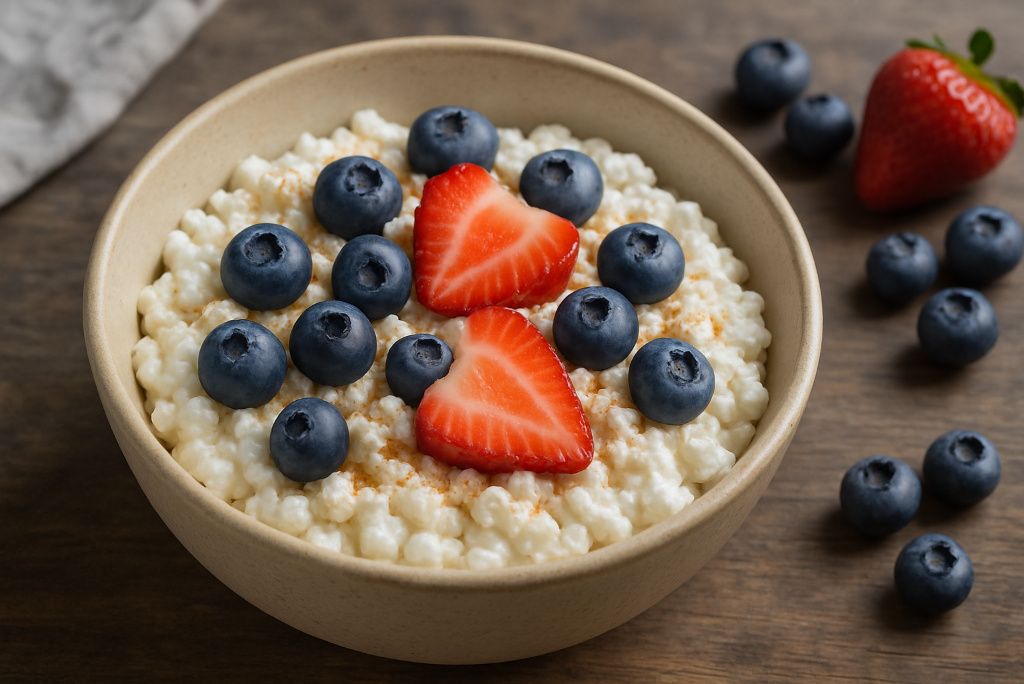
Cottage cheese is an underrated powerhouse for diabetic diets. Low in carbohydrates and high in protein, it keeps you fuller longer and helps stabilise blood sugar. Topping it with cinnamon and fresh berries adds flavour and antioxidants without significant carbs. This snack or breakfast option contains about 6 grams of carbs per half-cup serving, making it a far better choice than sugary granola or pastries. Explore more low-carb snacks at Cleveland Clinic.
13. Slow Cooker Chicken Chili
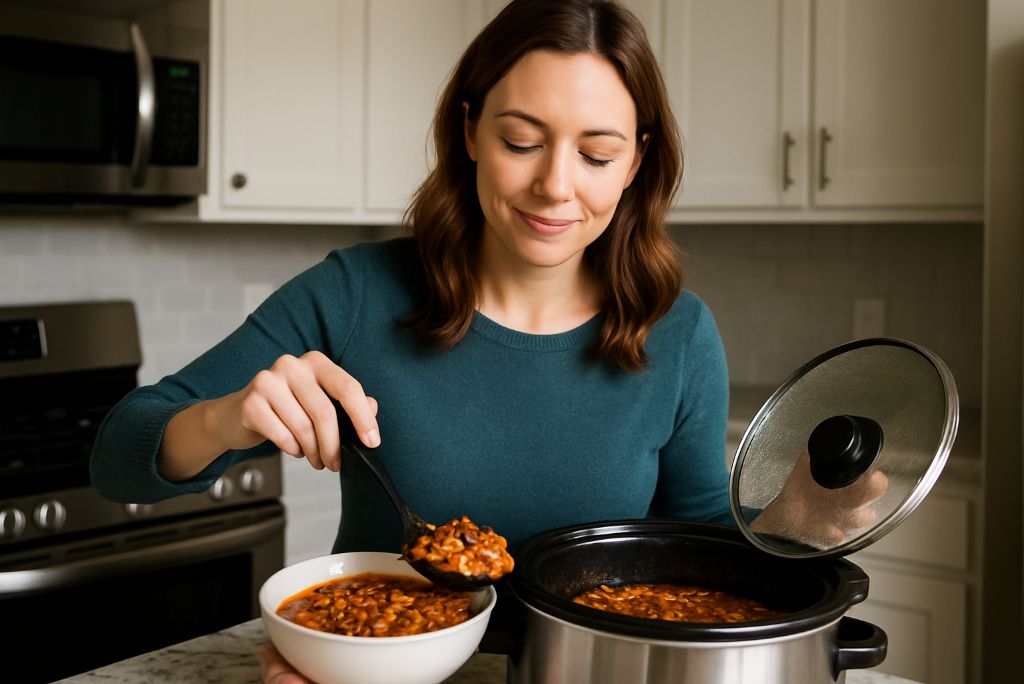
A hearty bowl of chilli can be comforting and blood-sugar friendly when made with lean chicken, tomatoes, beans, and plenty of spices. Slow cooking melds flavours without the need for sugary additives. Beans provide fibre and protein, helping regulate blood sugar despite containing carbs. Compared to traditional beef chilli with fatty cuts and added sugars, chicken chilli is lower in saturated fat and calories. Serve with a side salad instead of cornbread to keep carbs low. Discover more diabetic-friendly slow cooker recipes at Diabetes Food Hub.
14. Roasted Brussels Sprouts with Balsamic Glaze
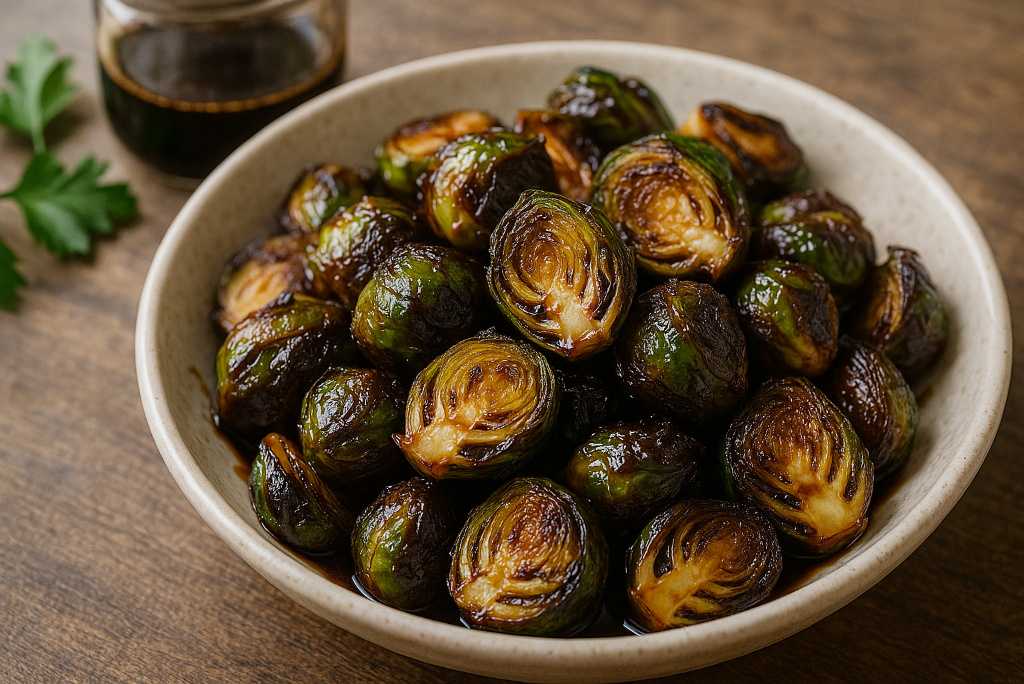
Brussels sprouts roasted in olive oil caramelise into crispy, slightly sweet bites. Adding a drizzle of balsamic glaze introduces tangy depth without many carbs if used sparingly. Non-starchy vegetables like Brussels sprouts are essential for diabetic-friendly eating, offering fibre and antioxidants. Compared to side dishes like mashed potatoes, roasted sprouts keep carbs low and deliver complex flavours. Try adding chopped pecans for crunch and healthy fats. Learn more about Brussels sprouts’ benefits at Healthline.
15. Almond Flour Pancakes
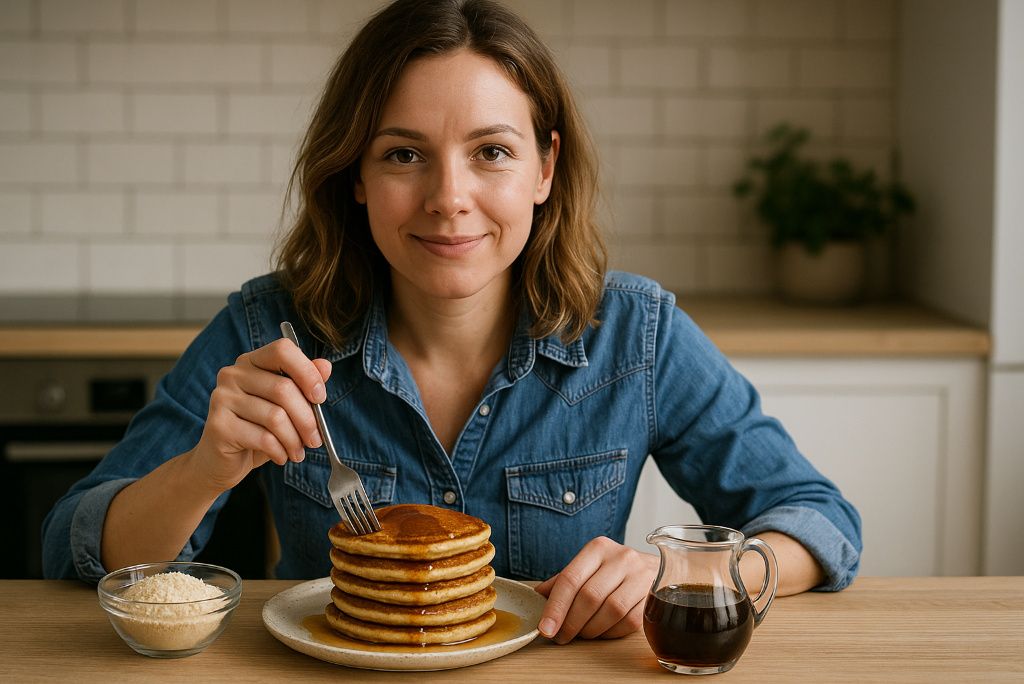
Breakfast favourites like pancakes are often off-limits for people managing diabetes due to refined flour and syrup. Almond flour offers a low-carb, high-protein alternative that keeps pancakes fluffy yet diabetic-friendly. Sweeten the batter with vanilla extract and top with fresh fruit instead of syrup. A typical almond flour pancake serving can have fewer than 10 grams of carbs, compared to over 40 grams in traditional recipes. Almond flour also adds fibre and vitamin E. For more diabetic baking tips, see American Diabetes Association.
Disclaimer: This content is intended for informational use only and should not be taken as medical advice. Always consult a healthcare professional or registered dietitian for personalised dietary guidance, especially if managing a medical condition like diabetes.

